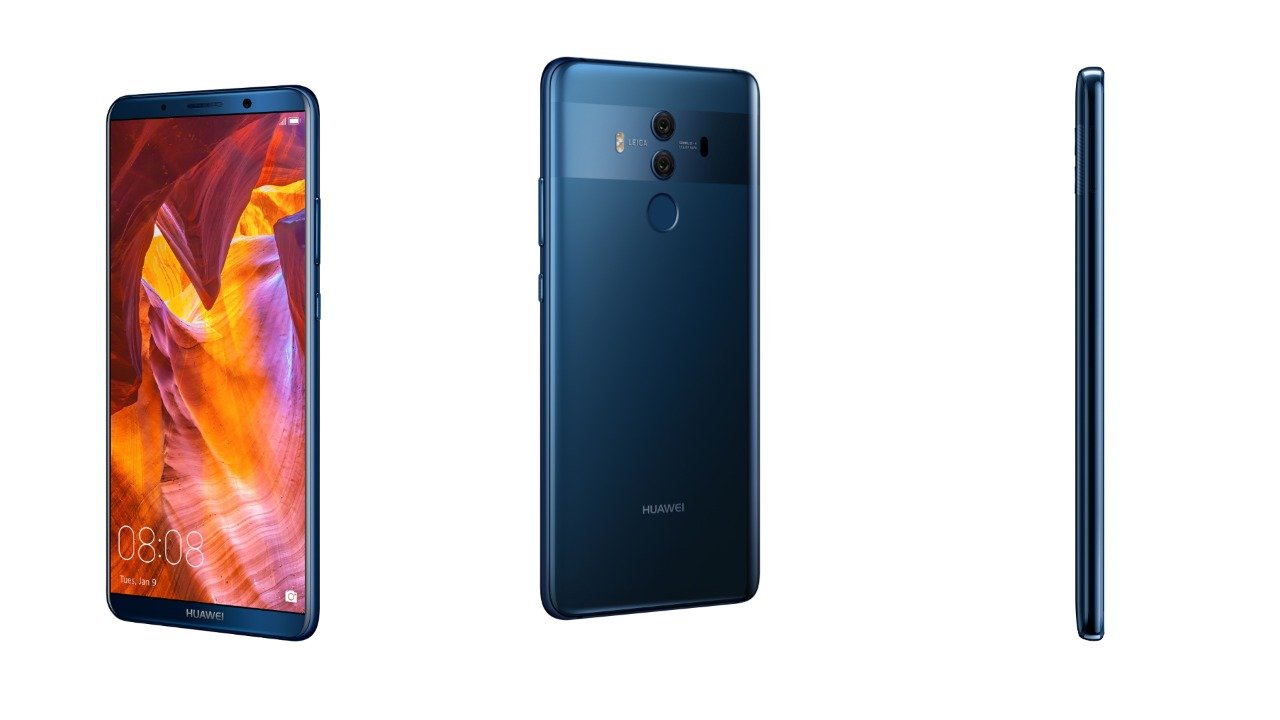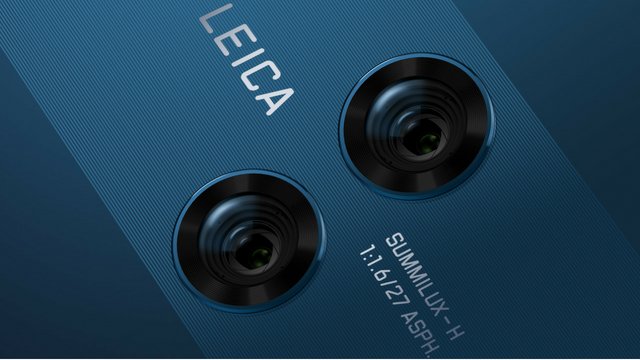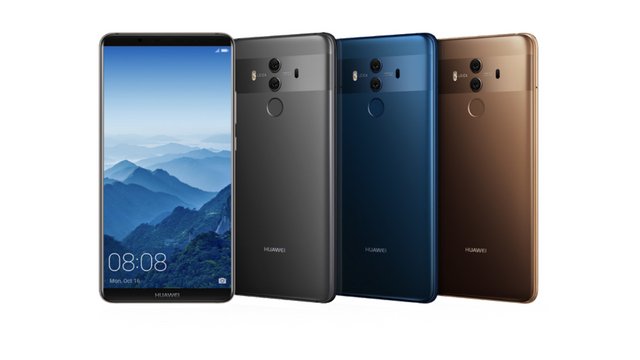I typically use an iPhone X as my personal smartphone. I’ve flipped and flopped over the years between iOS and Android, but Apple’s products always stood out as the better choice for me. I don’t say this to get all fanboyish over the iPhone. It has its own set of flaws, but what makes it the phone of choice for me is that it’s a known factor. You buy an iPhone you know what the OS is going to be like, you know the build quality is generally going to be excellent, and because of that Apple’s phones command a premium.
However, after carrying the Huawei Mate 10 Pro as my primary phone for three weeks, I’m convinced that Apple is going to have to start looking over their shoulder when it starts coming to Android flagship phones. The Mate 10 Pro matches the iPhone X in several categories and surpasses it in one or two. It’s a testament to how far Android has come, both hardware and software-wise.
For all the crying about the notch, I still think the iPhone X is the best looking phone I’ve ever seen, but the Huawei Mate 10 Pro gives it a run for its money, though.
Huawei Mate 10 Pro Review: The Outside

The days of black plasticky Android phones are over (at least when it comes to flagship phones). The Mate 10 Pro (Midnight Blue) I received for review has a beautiful Gorilla Glass back with a lovely blue hue. The fingerprint reader is set just below the two cameras and flash, and the back is otherwise smooth.
The front is just as minimalistic. It’s almost without bezels, with only a small bit at the top that contains the speaker and front camera, and a bit at the bottom. The 6-inch, 18:9, OLED display is the main attraction here, and it’s hard not to compare the Mate 10 Pro to the iPhone X.
Oddly the Mate 10 Pro’s display is a 2160×1080 model. With so many flagships rocking at least QHD screens, you would think that would have been a priority. However, in practice, it’s not that big a deal. I could tell the iPhone X was a bit crisper, but not enough to make much of a difference.
Huawei Mate 10 Pro Review: The Inside

The Huawei Mate 10 Pro is powered by Huawei’s own Kirin 970 chipset which consists of an Octa-core CPU (4 Cortex A73 2.36 GHz + 4 Cortex A53 1.8 GHz) with a Mali-G72 MP12 graphics co-processor. The phone is available either with 64 GB of storage and 4 GB of LPDDR4X 1833MHz RAM or with 128 GB of storage and 6 GB of RAM. My review unit was of the latter design.
A feature exclusive to the Mate 10 Pro is the Kirin neural processor that uses AI to help with several settings. The most useful is paired with the excellent Leica 20 MP Monochrome + 12 MP RGB OIS f/1.6 rear camera. The neural processor can automatically detect and adjust for various subject matters, like text, faces, flowers, food, etc.
The camera performed excellently, and it’s evident that Android phones are starting to surpass Apple’s camera hardware and software. The Mate 10 Pro’s camera app also contains a ton of settings, which give it a range of options nearer to a DSLR than a smartphone. The picture quality is excellent when shooting at 1-2x, but like all cell phone cameras, when digital zoom is engaged, focus and noise become increasingly problematic.
One of the most astounding things about the Mate 10 Pro for me was just how long the battery lasted. The 4,000 mAh battery kept the phone ticking all day for me, even with heavy use. If you’re someone who doesn’t spend a ton of time on their phones, you could easily go two and a half or three days without charging. For me, someone who has to continually be glued to Slack and Trello, I ended the day with the battery around 50-60%.
The Mate 10 Pro uses USB-C for charging, which I absolutely love. I will jump for joy when micro-USB, mini-USB, and USB-A are finally dead. Strangely, though, even though it has a glass back, the Mate 10 Pro doesn’t have wireless charging. It’s a feature I don’t use often, but for those who have come to expect it as a flagship feature, you’ll find a bit of disappointment here.
Another disappointment is the fact that the Mate 10 Pro ditches the 3.5mm jack. I hated it when Apple did it, and now Android hardware makers seem intent on following suit. Now, I would love if USB-C headphones became the new standard. Believe me, if everything on the planet connected via USB-C I think the world would be a better place.
However, in this less than ideal world, no one owns a USB-C headset. Well, maybe like one or two people, but most of us are still rocking the 3.5mm earbuds and headsets we paid way too much money for. Included with the phone are some compatible earbuds and a USB-C to 3.5mm adapter, but really the phone could have done without an IR blaster (though IR blasters are pretty cool) and it could have been replaced with a 3.5mm jack instead.
Huawei Mate 10 Pro Review: The OS

I remember when the only respite for those who wanted pure Android was Nexus devices. Some manufacturers still put too much crap in their home-built brand of Android, but the trend seems to be offering an experience closer to pure stock. Huawei’s in-house brand of Android is called EMUI, and it’s actually very close to a stock build. Also, Huawei’s EMUI 8.2. the current build for the Mate 10 Pro is based on Android Oreo, so you don’t have to wait an obnoxiously long time to get the latest updates.
EMUI has some irritating things by default. In particular, I hated that Facebook was installed as a system app. However, for those that like to tinker, from my research it seems like unlocking and rooting the Mate 10 Pro is a pretty straightforward process, so if you’re looking for an excellent phone that isn’t locked down this is an excellent choice.
Unfortunately, Android still has quality issues when it comes to UI and apps. It’s not Huawei’s fault, but the Play Store’s less vigorous enforcement of design and functionality means that apps for Android are a bit rougher around the edges generally. This has gotten way better over the years, but transitioning from iPhone to Android can still be a bit hard.
Huawei Mate 10 Pro Review: An Affordable Flagship
The Huawei Mate 10 Pro just hit the states in February 2018. It’s Huawei’s flagship in this country as the P20 isn’t available yet. Fortunately for you, the phone has declined in price enough that you can typically find it for much less than its original $799.99 MSRP. It can be regularly found on sale for around $550, and in that price range you’ll be hard-pressed to find a phone as capable as the Mate 10 Pro.
There are a few flaws with the design, but it’s a fantastic device and shows a lot of refinement that until only recently could be attributed to very few companies. One thing to look out for, though, is that it lacks CDMA support. So, if you’re with AT&T or T-Mobile, it’ll perform excellently, but Verizon and Sprint users may find that the phone doesn’t work on their networks. I have a plan with Verizon, so to review the phone I ended up getting an AT&T pay-as-you-go SIM which worked marvelously.
I enjoyed my time with the Mate 10 Pro, and during the three weeks I spent with it I found myself missing my iPhone X a lot less than I thought I would. I can say that I liked it enough that when I send the review unit back in, it’s likely I’ll end up picking up a Mate 10 Pro with the same specs in the very near future.
The Mate 10 Pro is an excellent, lower-priced alternative to costly Android flagships and gives you most of the features you’ve come to expect from high-end phones.











